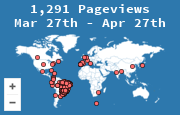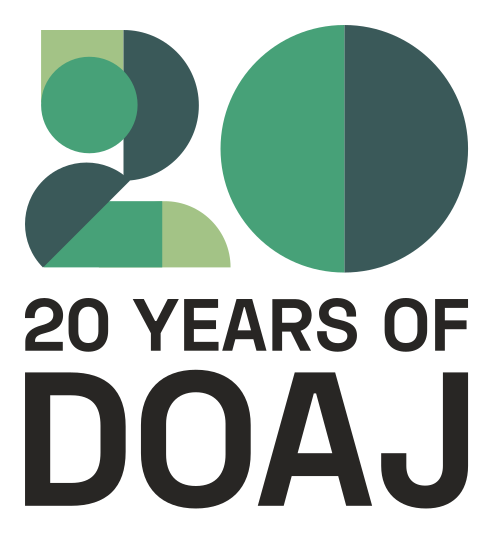The geographical distribution of public investments in tourism in Brazil from 2003 to 2018
DOI:
https://doi.org/10.26512/revistacenario.v9i2.35012Keywords:
Tourism Programs and Projects; Public Investments in Tourism; Ministry of Tourism.Abstract
Public investments in tourism play an important role in the development of destinations, as, in theory, they are generally aimed at improving urban infrastructure, promoting tourism, qualifying services, supporting the marketing of products, and managing and planning tourism. In Brazil, the main official tourism body, the Ministry of Tourism, from 2003 to 2018, invested an amount in excess of R$ 17 billion. Considering the relevance of public investments for the development of tourism, the research aimed to reveal the geographical distribution and the profile of the resources applied by the Ministry of Tourism, in the period from 2003 to 2018. The methodology of this study is characterized as a descriptive and quantitative, since it is based mainly on the survey and analysis of budget execution in tourism carried out by the Brazilian federal government, having as its main source of information the Union's Budget Execution Reports. Such reports allow to filter the resources executed by agency, program, project and locality. In this way, the obtained data allowed to visualize the geographic distribution of public investments in tourism in Brazil, revealing the regions of the country that concentrate the resources and the neglected regions, according to the investment areas. Regarding the investment profile, it is concluded that the Basic and Tourism Infrastructure area concentrated 68.2% of the total resources applied by MTur. The second area of ”‹”‹greatest investment is Tourism Promotion (18.4%), and the least privileged areas are Management and Planning (3.7%), Qualification of Services (2.2%), Product Marketing (0, 8%) and Studies and Information Systems (0.4%). The Northeast was the region that concentrated public investments in tourism over 17 years, representing 20.4% of the total invested, with emphasis on the states of Ceará, Pernambuco, Paraíba, Bahia and Alagoas. The Southeast region captured 8.6%, with emphasis on the states of Minas Gerais and São Paulo. The states of Rio de Janeiro and Espírito Santo did not show significant investment compared to MG and SP. The South region covered 4.8% of investments. The states of the Midwest and North regions are the most neglected in relation to public investments in tourism, covering 3.8% and 3.5% of resources respectively over the 17 years of activity of the Ministry of Tourism. Due to the lack of detail in the Union's Budget Execution Reports, it was not possible to identify the destination of 59% of the resources applied by the MTur, demonstrating the lack of transparency in public spending in Brazil.
Downloads
References
Abreu, C. R., & Câmara, L. M. (2015). O orçamento público como instrumento de ação governamental: uma análise de suas redefinições no contexto da formulação de políticas públicas de infraestrutura. Revista de Administração Pública, 49(1), 73-90.
Abreu, W. M. de, Neiva, V. M., & Lima, N. (2012). Modelos de tomada de decisão no processo orçamentário brasileiro: uma agenda de pesquisas. Revista do Serviço Público, 63(2), 135-155.
Brasil, H. G. (1993). Processo decisório e a questão orçamentária: uma analogia. Revista Administração Pública, 27(3), 115-146.
Caiden, N., & Wildavsky, A. (1980). Planning and budgeting in developing countries. New York: John Wiley.
Cruz, R. C. A. (2001). Política de turismo e território. São Paulo: Contexto.
Cruz, R. C. A. (2018). Desenvolvimento desigual e turismo no Brasil. Confins Revista Franco-Brasileira de Geografia, 36. DOI: https://doi.org/10.4000/confins.13707.
Fayissa, B., Nsiah, C., & Tadessse, B. (2011). Research note: tourism and economic growth in Latin American countries ”“ further empirical evidence. Tourism Economics, 17(6), 1365”“1373.
Fittipaldi, I., Costa, S. F., & Araújo, C. M. C. (2017). O gasto público federal brasileiro: um perfil incrementalista? Rev. Serv. Público, 68(3), 611-630.
Fortis, M. F., & Gasparini, C. E. (2017). Plurianualidade orçamentária no Brasil: diagnóstico, rumos e desafios. Brasília, DF: Enap.
Key Jr., V. O. (1940). The lack of a budgetary theory. The American Political Science Review, 34 (6), 1137-1144.
Knafou, R. (2001). Turismo e território: para um enfoque científico do turismo. In:
Rodrigues, A. B. (Org). Turismo e geografia: reflexões teóricas e enfoques
regionais. São Paulo, SP: Hucitec, 62-74.
Lemos, C. C. (2013). Planejamento do turismo em âmbito federal: uma análise dos instrumentos utilizados e dos investimentos no setor. Revista de Administração Pública, 47 (6), 1401-1427.
Lindblom, C. E. (1959). The Science of Muddling Through. Public Administration Review, 19(2), 79-88.
Lindblom, C. E. (1979). Still Muddling, Not Yet Through. Public Administration Review, v. 39(6), 517-526.
Ministério do Turismo (2019). Boletim do Turismo Doméstico Brasileiro. file:///C:/Users/Cliente/Downloads/Boltim_Turismo_Domestico_Brasileiro_2020_AB-3T2019.pdf
Nawaz, M. A., & Hassan, S. (2016). Investment and tourism: insights from the literature. International Journal of Economic Perspectives, 10(4), 581-590.
Pires, J. S. D. B., & Motta, W. F. (2006). A evolução histórica do orçamento público e sua importância para a sociedade. Enfoque: Reflexão Contábil, 2(25), 16”“25.
Rocha, D. G., Marcelino, G. F., & Santana, C. M. (2013). O orçamento público no Brasil: a utilização do crédito extraordinário como mecanismo de adequação da execução orçamentária brasileira. Revista de Administração, 48(4), 813-827.
Rosentraub, M. S., & Joo, M. (2009). Tourism and economic development: Which investments produce gains for regions?. Tourism Management, 30, 759”“770.
Silva, R. C. (2020). A interferência parlamentar no orçamento do Ministério do Turismo: discurso e realidade das políticas públicas de turismo no Brasil. f. 248. Tese (Doutorado em Turismo) ”“ Universidade Federal do Rio Grande do Norte, Natal, RN.
Simon, H. (1955). A Behavioral Model of Rational Choice The Quarterly Journal of Economics, 69(1), 99-118.
Todesco, C, & Silva, R. C. (2017). Planejamento e execução orçamentária em turismo no Brasil (2003-2016). Anais Seminário da ANPTUR. Recuperado em: <https://www.anptur.org.br/anais/anais/files/14/751.pdf>.
Vieira, D. P., Hoffman, V. E., & Alberton, A. (2018) Investimentos Públicos, competitividade e desenvolvimento: um estudo em destinos turísticos brasileiro. Revista de Administração Pública, 52(5), 899-917.
Wildavsky, A. (1961). Political implications of budgetary reform. Public Administration Review, 21(4), 183-190.
Wildavsky, A. (1975). Budgeting: a comparative theory of budgeting processes Boston: Little Brown.
Downloads
Published
How to Cite
Issue
Section
License
Copyright (c) 2021 Cenário: Revista Interdisciplinar em Turismo e Território

This work is licensed under a Creative Commons Attribution-NonCommercial-NoDerivatives 4.0 International License.
1. Proposta de Política para Periódicos de Acesso Livre
Autores que publicam nesta revista concordam com os seguintes termos:
Autores mantém os direitos autorais e concedem a revista o direito de primeira publicação, sendo o trabalho simultaneamente licenciado sob a Creative Commons Attribution License o que permite o compartilhamento do trabalho com reconhecimento da autoria do trabalho e publicação inicial nesta revista.
A contribuição é original e inédita, e não está sendo avaliada para publicação por outra revista.
Autores cedem os direitos de autor do trabalho que ora apresentam a apreciação do Conselho Editorial da Revista Cenário, que poderá veicular o artigo na Revista Cenário e em bases de dados públicas e privadas, no Brasil e no exterior.
Autores declaram que são integralmente responsáveis pela totalidade do conteúdo da contribuição que ora submetem ao Conselho Editorial da Revista Cenário.
Autores declaram que não há conflito de interesse que possa interferir na imparcialidade dos trabalhos científico apresentados ao Conselho Editorial da Revista Cenário.
Autores têm autorização para assumir contratos adicionais separadamente, para distribuição não-exclusiva da versão do trabalho publicada nesta revista (ex.: publicar em repositório institucional ou como capítulo de livro), com reconhecimento de autoria e publicação inicial nesta revista.
Autores têm permissão e são estimulados a publicar e distribuir seu trabalho online (ex.: em repositórios institucionais ou na sua página pessoal) a qualquer ponto antes ou durante o processo editorial, já que isso pode gerar alterações produtivas, bem como aumentar o impacto e a citação do trabalho publicado.











